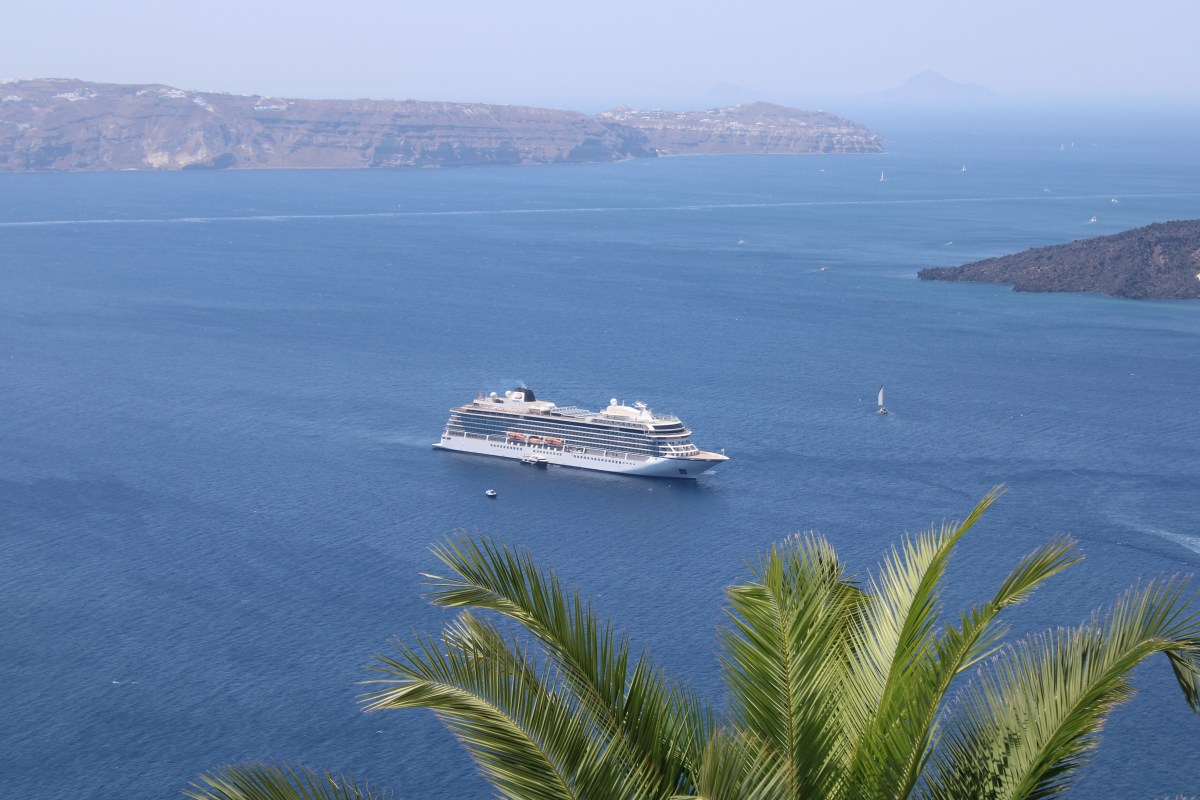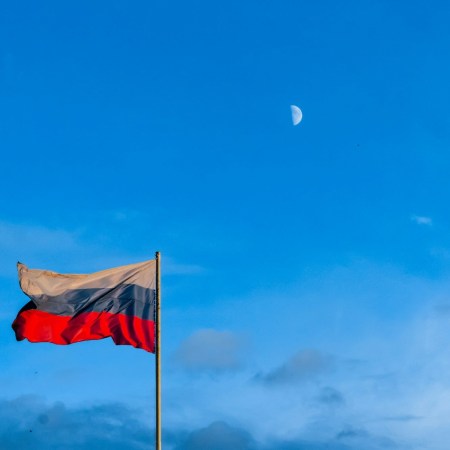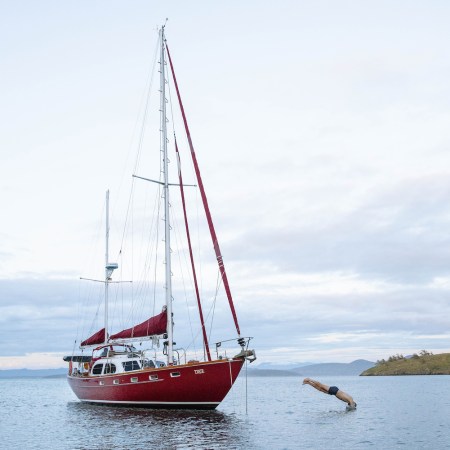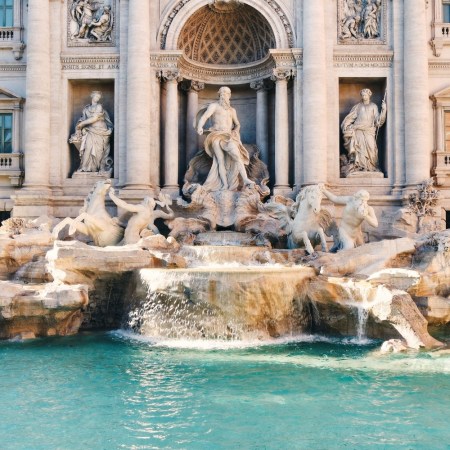Two weeks ago today I was standing on the sports deck of the MV Viking Sea, sipping a glass of cab and staring up at the night sky, pretending I could accurately identify a single constellation beyond the Dippers.
The Mediterranean whipped by below and the lights of port towns twinkled along the coastline. The temperature was easy and effortless, the wind from the water an orgasmic bonus. I could’ve stayed there for hours, but I had an early morning. On the way back to my room, I passed through the Explorers’ Lounge, where buzzed couples in tucked-in shirts and floral dresses were ordering drinks with precise ice cube requirements (five is far too many, one man shook his head) and a performer was playing Guns N’ Roses on a ukulele, amidst murals and maps that paid homage to the seafarers of yore…Columbus core.
The ship was reluctant to go to sleep. There were breakaway troupes playing cards in the atrium, smoking cigarettes on the seventh deck, listening to “the Michael Buble of Ireland” perform in the Star Theater or dancing the night away at Torshavn Lounge & Bar, the geriatric disco that I hadn’t yet summoned the courage to pay a visit. I’d heard rumors that the club had been haunted all week by a self-professed “Dancing Queen,” whose outfits and shimmies had escalated in pizzazz with each passing evening.
Viking’s clientele, 950 strong across the ship’s eight decks of suites, was about what I’d expected. Wikipedia claims that Viking markets its adventures to “wealthy American retirees.” I didn’t see or hear much that would contest that. Halfway through the trip, I sent some friends a greatest hits collection of sound bites I’d cataloged and written down in the Notes app of my iPhone. It included a hospitality executive explaining his daughter couldn’t decide between the Ikon or Epic pass, so he’d purchased her both; a grandma concerned that her grandson had made friends with a boy named “Jesús”; and a curious Ohioan who’d asked a Croatian shucker to share the temperature of a harbor, only to follow up somewhat menacingly…”In Fahrenheit!”
These Americans — most of them from the Midwest — comprised the majority of my cruising colleagues, but there were some other identifiable types: 30-something honeymooners, incoming college freshmen on a climactic family vacation (a few years ago, Viking officially raised its age minimum to 18), and for every 10 aging American couples, give or take, their Union Jack counterparts. Within the older ranks, you could subdivide further: there were energetic empty nesters, there were Viking loyalists on their eighth or ninth cruise, there were widows in sun hats (guided by sons or daughters) who didn’t look like they had much time left. After years of postponements, many were thankful to finally see this part of the world — and openly honest that they would never return. Watching them struggle up stairways in Corfu, or Dubrovnik, I felt thankful for my knees.
Carrying around a notepad and a camera, and trying my best — in spite of the daily glasses of wine and frequent swims in the Adriatic or Ionian — to remain in “work mode,” I managed to stay somewhat invisible on the ship. Once in a while, I had to explain myself. There was one evening where I was approached by an Alaskan and a West Virginian at the bar; they wanted to know if I was actually reading the copy of the Odyssey next to my drink (picture Charlie Brown lugging around War and Peace in that New Year special). I was. I told my story: a Brooklyn writer on invitation from Viking. I’d chosen the “Ancient Empires of the Mediterranean” cruise, I said, because I appreciated that the liner could reach such far-flung ports of call. Koper, Slovenia? Zadar, Croatia? Kotor, Montenegro? These weren’t easy places to get to.
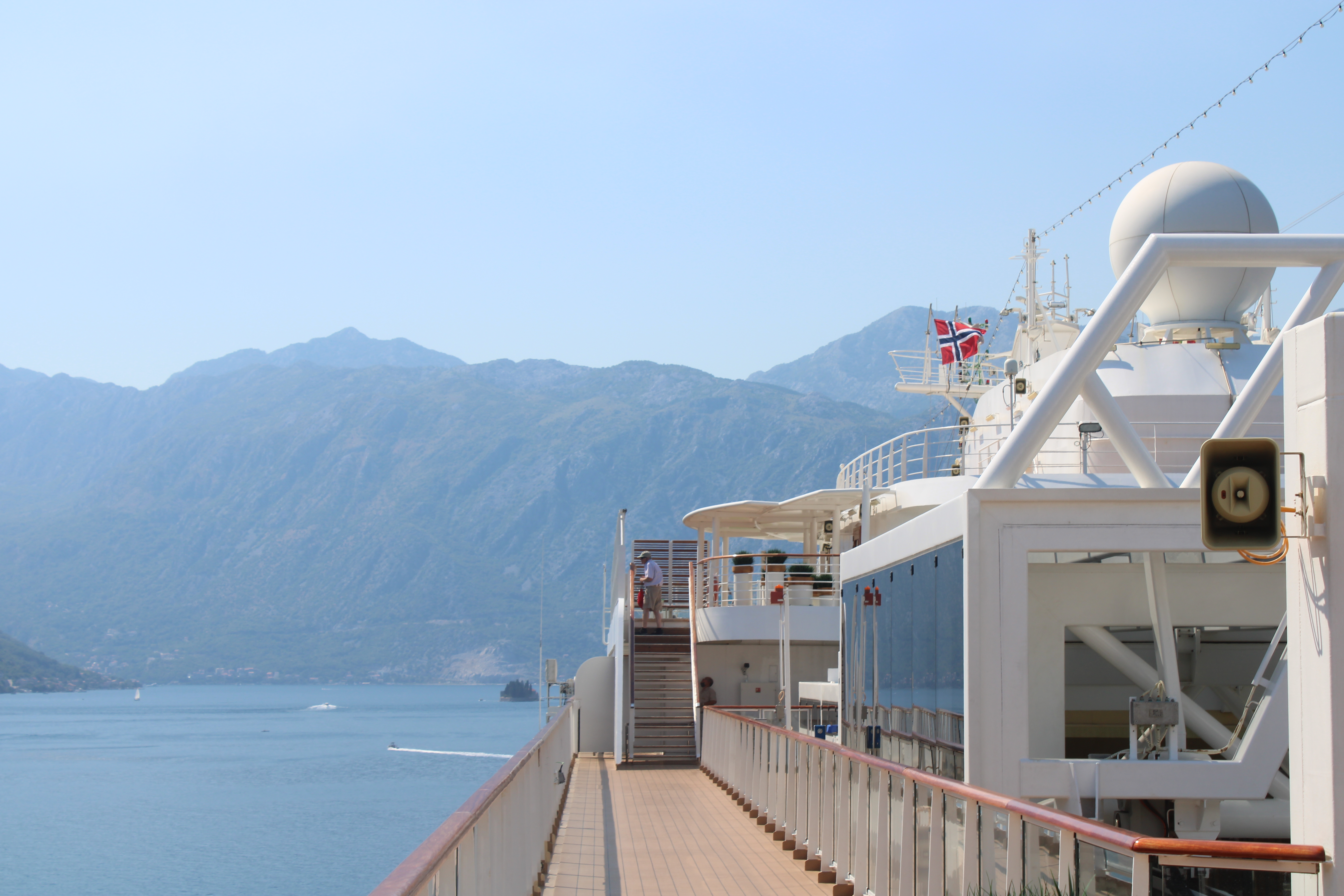
Unsurprisingly, Viking got hit hard during the pandemic. The company had reeled in $3 billion in revenue in 2019. When COVID arrived, travel restrictions obviously made the company’s entire business model untenable. But it went deeper than logistics; if you can remember back to the early days of quarantine, cruises were an emblem for the very worst coronavirus nightmare any one of us could possibly imagine. Think: the tightest of quarters, all amenities shut down, medical help limited or outright unavailable, complicated repatriation processes. After operations were suspended indefinitely, Viking founder and chair Torstein Hagen lost 66% of his wealth, plummeting his net worth from $6.28 billion down to an estimated $2.1 billion within a calendar year.
It was a shocking fall for the Norwegian, and his Swiss-based liner, which he founded in 1997 with just four ships. The fleet has since expanded to over 80 vessels, six of which are oceangoing. (Until about a decade ago, Viking was solely operating river cruises; it has the largest river-cruising fleet on the planet, with regular adventures along the Danube and Nile.) Hagen kept a hopeful demeanor during the worst of the last 30 months; in a press release towards the end of 2020, at which point vaccines were still half a year away, he said “Over 40 years in the cruise industry have taught me that challenging times — such as these — are often also times of great innovation and opportunity.”
Viking managed to stay afloat, despite hemorrhaging funds for months on end, thanks to $500 million in investments from private equity firm TPG and asset manager Canada Pension Plan Investment Board. In March, Hagen officially claimed victory, declaring COVID “really behind us.” Viking’s 10,000 employees came back to work last summer, but clunky travel requirements kept many prospective patrons from booking tickets. This year, half a million guests are expected to step on a Viking ship; it’s part of an industry-wide bonanza, and one that Viking forecasts will break their record-setting revenue of 2019.
This year was actually circled on Viking calendars well before anyone was familiar with the phrase social distancing. It’s their 25th anniversary, and they’ve made good on some long-rumored lateral expansions. Four new longships (designed to maximize passenger capacity on river cruises, which generally hovers below 200) were introduced to the European market this spring, and by the end of the year, Viking plans to welcome two more ocean ships into the fray, alongside fledgling voyages in the Mississippi River (meeting their customer base where they are), plus another “expedition” ship, which will bring guests to the lands of polar bears and penguins on either pole.
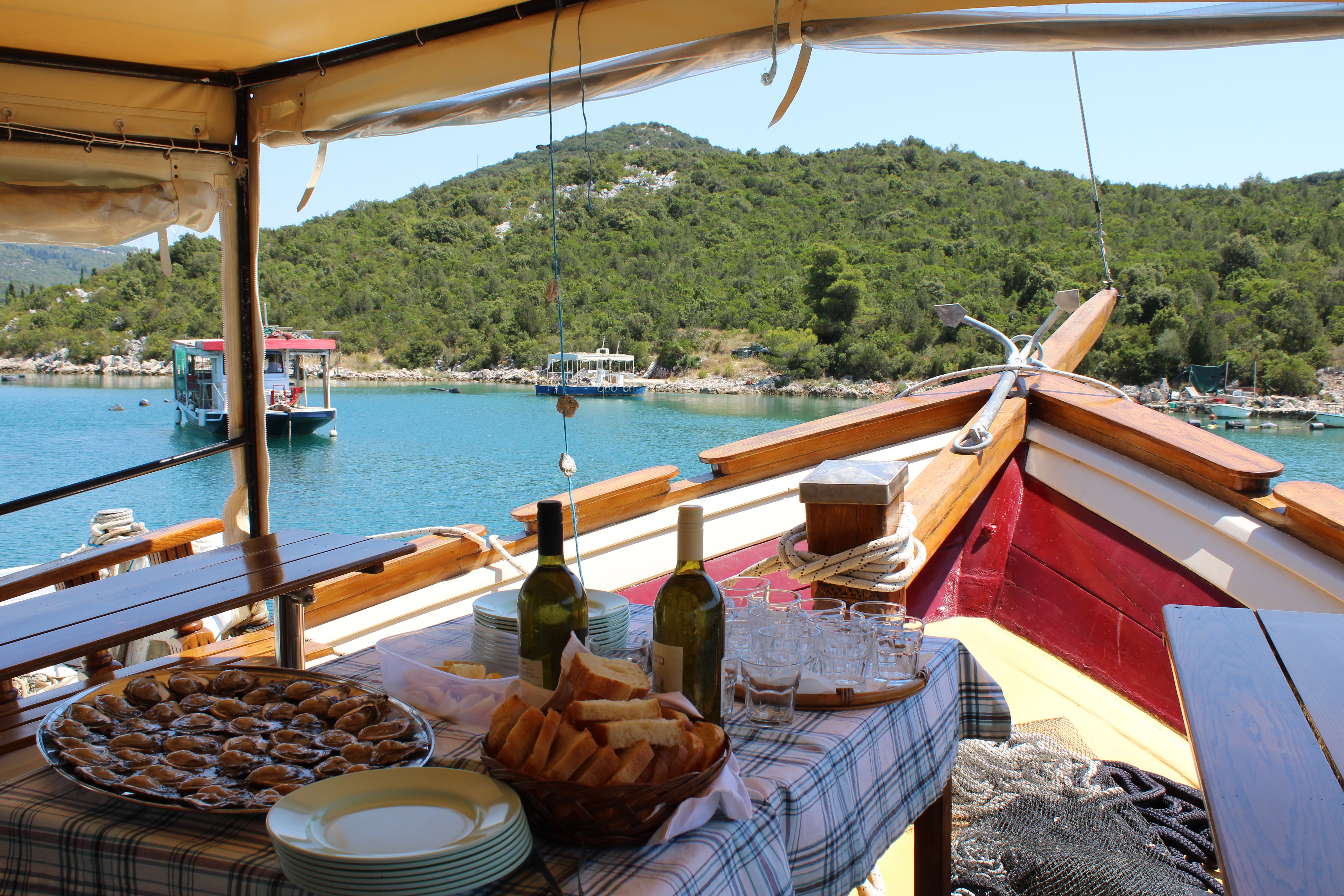
It may not feel like the pluckiest of underdog stories that Viking emerged from some of the travel industry’s darkest days looking this strong. It’s a titan in a crowded category, after all, which caters to adults with lots of money and lots of free time. But the company deserves its credit: it employs workers from all over the world, drops its deep-pocketed cargo off daily in communities that rely on tourism to feed their children, and maintains positive relationships with tour guides, drivers, family farmers, restaurant owners and merchants everywhere it sets anchor. That dynamic isn’t just coastal, or concentrated along riverbanks, either — some of Viking’s “shore excursions” travel deep into the hinterlands of the hosting country. One day, after eight hours of driving around Montenegro, my tour guide urged my group to come back, but acknowledged that we had more or less seen the country.
Viking benefits from a clear perspective and a cogent pitch: it considers itself the “thinking man’s” cruise, Viking Sea’s general manager told me one day, during a near-three hour tour throughout the ship. Whether its patrons live up to that expectation is somewhat immaterial. They are given every opportunity to do so. The day before the liner arrives at its next location (let’s say, Santorini) there are live, supporting talks meant to parse through the history of the locale and instill a sense of place, just as the chefs prepare regional dishes. By six or seven the next morning, the boat arrives in the harbor. By nine, any guest who chooses to leave the boat is off on any of a half-dozen tours (one of which is always free — a guided amble around the port city — while the rest are paid add-ons, anywhere from $50 to $200 a head). You can also set off on your own, if you’d rather take a break from following men and women carrying Viking-printed red “lollipops” through throngs of amused locals.
I generally tried to take advantage of both. Santorini is a fine example. That morning, I toured Nea Kamemi, a volcanic island so young that it arrived on the planet 100 years after the assassination of Julius Caesar. There’s a small fissure near the center of the lava dome where you can breathe in in the ashy, inner workings of the caldera. (It smells like scrambled eggs.) Later that day, my sponsored tour over, and my legs finally free to travel at their preferred clip, I embarked on a lengthy solo hike of Fira. I covered almost all of the town. On the way back, I stopped at a cafe called Pink Maria Sophia. A chalkboard outside promised “the best lemonade in the world,” which I ordered verbatim. The gentleman behind the counter asked with a cheeky grin if I might want “the best lemonade in the universe,” instead — their famous lemon crush with a shot of vodka. I said yes, but I never found out if he actually added the booze; it went down too smooth for me to tell.
Viking’s model works. It doesn’t preclude you from having “authentic” travel experiences. And each morning, well: you can learn, you can hike, you can eat. There was a tour that visited hidden grottos along the rocky shoreline of Corfu, a tour that delved deep into the karst caves of Slovenia and a tour that visited the very first stadium ever built by mankind, at the original Olympic grounds in the foothills of The Peloponnese. While there, I spotted a woman in our tour group, almost definitely north of 75-years-old, squeeze her husband’s hand and whisper “I could stay here all day.” I’m not kidding: it was 103 degrees that afternoon. For many who keep returning to Viking, they appreciate the ease with which these magical moments arrive, almost like clockwork, every single day. They don’t have to research tours or rent cars or negotiate side-quests from hotels to boondocks in order to make the most of their trip. That stuff is difficult enough to pull off when you’re in your twenties, let alone your eighties. Viking has boiled the formula down to an app; and for the less tech-savvy, a trip to one of six different concierge desks allows you to modify your week’s itinerary within minutes. (I had multiple changes of heart on the trip, and one nasty hangover which, courtesy of the Alaskan and West Virginian, led to me missing a morning engagement; the front desk put my routine back on track whenever I needed them.)
That day we were in Santorini, three other cruise ships arrived. I gawked at the harbor as I made my way back down the serpentine road to sea level, dodging donkeys all the while. I was shocked to see how much smaller our ship was than the others. Classier, too. There were waterslides hanging off the sides of two of the other vessels, which glinted with a sort of plastic sheen. By comparison, Viking Sea (built by Italian shipmakers), calls to mind the golden age of yesteryear’s transatlantic travel. It looks like the James Cameron set of that-ship-we-shall-not-name come to life, with wooden banisters and glass terraces. It’s luxurious, make no mistake, but in the pared-back and approachable sense that has long vaulted Northern European design. The general manager told me the goal was to provide furniture that you’d actually want in your living room back home. Viking’s differentiator has long been what it can do: moor its smaller boats in outlying ports. But it might also be defined by what it’s utterly unwilling to do; there are no white glove dinners or art auctions on its boats, nor umbrella drinks or casinos. Viking’s definition of excellence, the brand appears to have decided, doesn’t have to come at the expense of level-headed casualness. The ship’s head chef proudly shared with me that on-board restaurant Manfredi’s was voted “the best Italian restaurant at sea.” They’re known for their garlic bread.
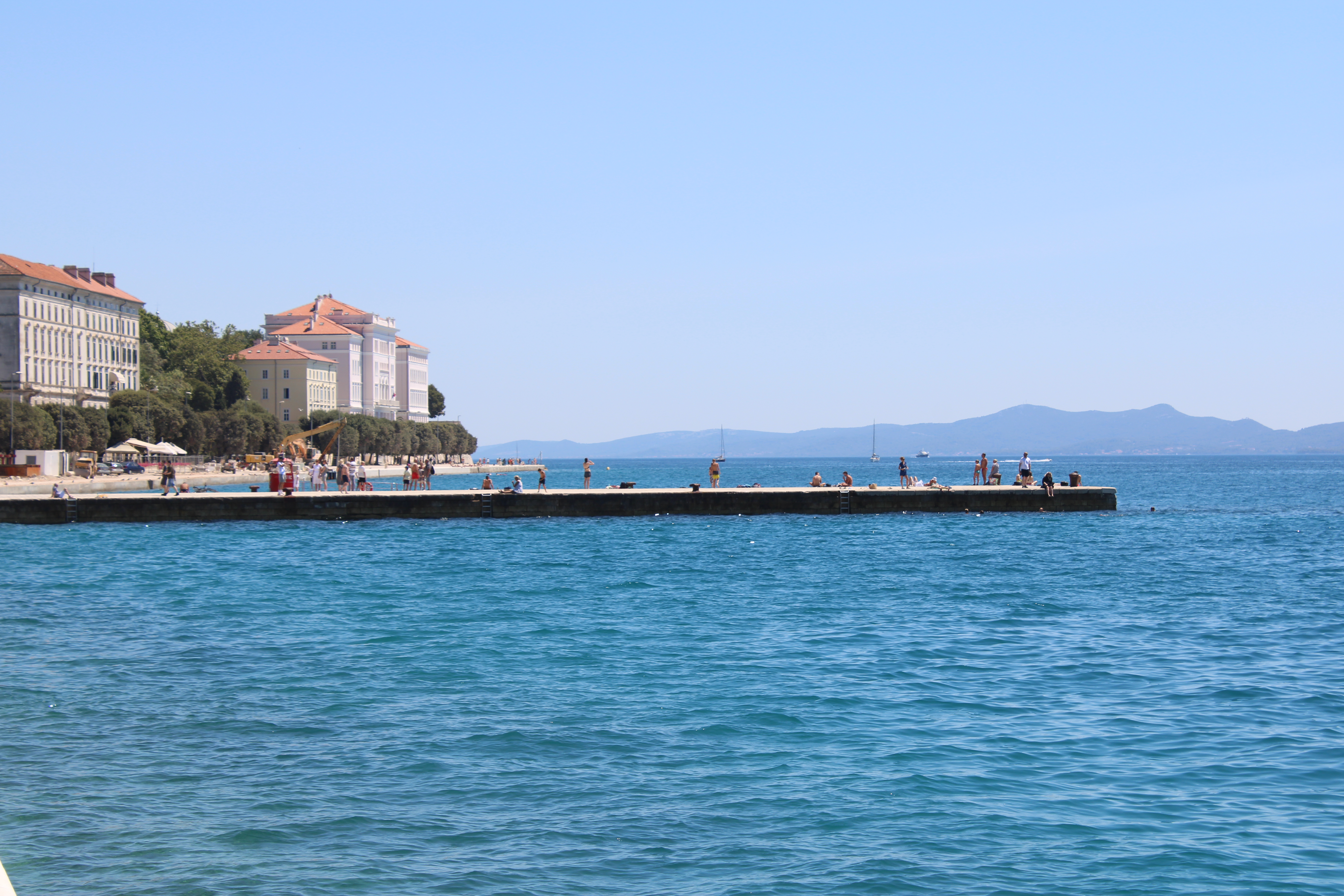
I settled into a rhythm on Viking Sea. Each day I ate room service breakfast (Norwegian smoked salmon — it’s Hagen’s favorite, and important to him that every ship has the real thing — with eggs, toast, fresh fruit and black coffee on my terrace), while processing, bleary-eyed, that I was staring at a new country. From there, I’d meet up with my tour group, spend four or five hours taking photos, and then make a judgment call on whether I had enough time for some bonus solo travel before returning to the ship. The answer was sometimes no, which is a peril of cruise travel, and one that can be frustrating in the summertime, when some European cities spend the most oppressive hours of the day napping or hiding from the sun, only to return outside later for drinks, coffee and cigarettes, as the lights around the ruins turn on and the city hums back to life. If we were leaving before 4:00pm, I would head back to the ship; if we were leaving later than that, or (god bless a day we spent in Dubrovnik) as late as 11:00pm, I would go get drunk and go for a swim. Not in that order.
In the weeks leading up to the trip, I’d worried that I would feel cramped or aimless on the ship. I didn’t have anyone to play bocce with on the sports deck, after all, and there’s only so much Homer one man can read — even when the very islands the ancient scribe was writing about are in front of your face — before you start scrolling through Instagram. But I thoroughly enjoyed my hours on the ship, and most of all treasured my daily pilgrimages to the Nordic spa. As with most wants on the ship, like a beer at dinner, access to the spa is included in your ticket (the one thing I can say for sure I got robbed on was a $27 can of sunscreen from the hotel shop). Every single day, I jumped in the cold plunge pool, spent 15 minutes in the sauna, and cycled from the snow grotto, to the steam room, to the “vibrancy pool.” I never did figure out what was so vibrant about it, other than the fact that it was warm and produced tiny waves, but I loved it all the same. Rounding out this joyous festival of water was the humble bucket shower — you pull a chain and a rustic scuttle dumps water on your head, before refilling itself moments later. I seemed to find this contraption more captivating than any other guest on the ship. From there: some downtime in my room, a buffet dinner, a glass of wine, another sunset, and an early bedtime.
If there was one thing that made me consistently uncomfortable about these days, it was the role of the crew in making them happen. You don’t have to have recently finished White Lotus to feel this, and struggle with it — workers changed my sheets twice a day, unplugged vacuums and galloped out of other suites to wave hello to me whenever I returned from a shore excursion, and sometimes, at dinner, brought me things I hadn’t even asked for, simply remembering that I had ordered them two nights before, and anticipating that I might want them again. (They were always correct.) While I felt invisible to the rest of the guests, I felt like George Clooney to the 450-plus workers on the ship. This treatment made quite the impression on the paying customers; sometimes I’d see them shaking their heads in wonder, musing on how remarkable it was that the workers seemed to “love their jobs so much.” Occasionally, I would try to bring the conversation slightly past small talk with members of the crew, with the caveat that I wasn’t allowed to interview them for this article. They were from all over, but many were from South Africa and Indonesia. I asked one bartender what compelled him to move away from home, only to realize, foolishly, that he still lived there. He spent four-month shifts on the Viking Sea at a time, with intervening stints of one to two months home.
Clearly, Viking employees are trained to provide guests with unceasing, unflappable positivity. I still have my misgivings about this status quo, but I’m self-aware enough to acknowledge my naivete on how the upper echelon of the hospitality industry functions. It’s a performance, perhaps, but it’s an expected one. And quite frankly: what would I prefer instead? For the sushi chefs to play hard to get? These are coveted jobs, which are hard to keep. The crew have opportunities of their own to leave the ship and tour the ports of call. Managers have to be careful about sussing out who’s applied for the gig for an adventure, and who genuinely wants to be a part of the Viking family. On my tour around the ship, I had the chance to meet the workers who process hundreds of towels a day (in industrial washing machines that cost more than a Maserati), those who load Viking Sea with provisions in Venice (it needs to be enough for 10 days at sea; that’s about 30,000 eggs) and the officers who keep watch in the bridge. After some prodding, they shared old stories from careers spent on the sea. The highlights: a parkour artist who mistakenly leapt off a boat into the Atlantic, traveling with armed guards when sailing through the Horn of Africa, the fisherman in the Indian Ocean who bring their dinghies as close to the bow of cruise ships as possible, believing that surviving the encounter will bring them good luck and a flush catch.
No one called my name as I walked around the crew’s quarters, an entire city in its own right, hidden just below the unassuming upstairs. They seemed comfortable down here, playing cards and fixing plates with heaping helpings of brown basmati rice — the one foodstuff, above all else, the ship is not allowed to run out of. I was shown a yellow locker where they keep the good stuff (pre-war cognac), along with one of the more delightful machines I didn’t know the human race had invented yet (an inflatable, torso-shaped post that steamed and fitted shirts in a matter of milliseconds). For all these riches and gizmos, there are some answers Viking is still searching for; for instance, it has a massive single-use plastic problem, which management is acutely aware of. Viking tears through thousands of water bottles a day, especially when its septuagenarians are hobbling around in the heat, and it doesn’t know what to do about it. The powers that be have floated around giving everyone a complimentary reusable water bottle, but don’t believe the ships have the bandwidth to wash and return them at the close of each day. I was disappointed to hear that more mental energy hasn’t been dedicated to solving this problem, considering that running an international cruise conglomerate must already involve an unthinkable web of contracts, compromises and offbeat thinking. Surely sustainability-conscious Scandinavia has brands that distribute water in cardboard or glass bottles?
But I feel confident in otherwise sharing that for the most part, the thinking man’s cruise has thought of everything. At one point, I think it was the afternoon we departed from Katakolon, Greece, I was sitting on my terrace, eating a Caesar salad and imagining what it would be like to live for weeks on end on a Viking vessel. The impetus for the train of thought was that over the previous few days I’d suddenly felt completely at ease on the boat, and knew, in that moment at least, that I would be content to discover a new country and then jump in a cold pool every day for the rest of forever. The perfect, predictable truth, as I learned later, is I don’t even have to imagine such an arrangement. Viking has a cruise from Milwaukee to Argentina’s Ushuia, the southernmost city in the world. It takes 70 days. That’s time aplenty for unsavory sound bites, and with that many nights on open water, a Torshavn hangover seems almost inevitable. But if those are your greatest gripes en route to seeing the world — especially if you can foresee the day that you’ll be leaving it for good — who in their right mind could say it isn’t worth it?
This article appeared in an InsideHook newsletter. Sign up for free to get more on travel, wellness, style, drinking, and culture.
